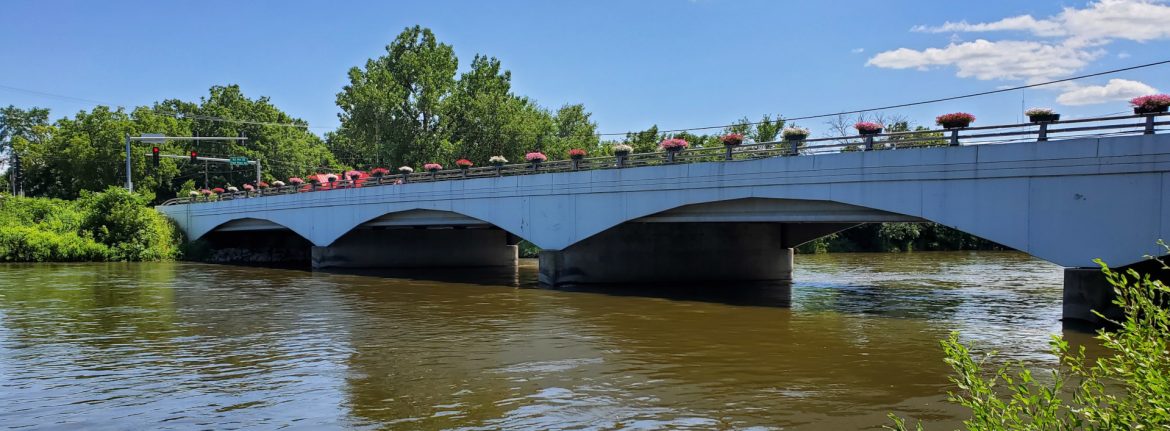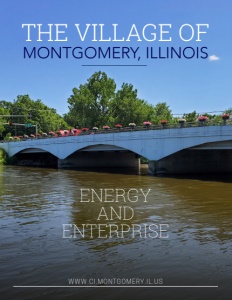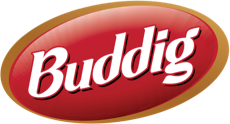The Village of Montgomery, Illinois
Energy and enterprise
Business View Magazine interviews representatives of Montgomery, Illinois, as part of our focus on best practices of American towns and cities.
Montgomery, Illinois is a village the sits on both sides of the Fox River, in Kane and Kendall Counties, some 40 miles west of Chicago. In the fall of 1835, Daniel S. Gray, from Montgomery County, New York, visited the area where his brother Nicholas Gray had located in the previous spring, and in 1836, after his family moved from New York State, he built the first wooden house in the area. Gray also bought land grants from the federal government and the new settlement he founded was originally called Graystown. Eventually, Gray convinced other settlers to call the small village Montgomery after the New York county where he and several other settlers had come from. Over time, the industrious Gray founded many companies in Montgomery, including a tavern, store, warehouse, foundry, combine, and fabrication shop and one of the best stone grain mills in the county. On February 17, 1858, the Village of Montgomery, Illinois was officially incorporated.
For much of the twentieth century, the Village grew slowly and steadily. Lyon Metal was founded in Montgomery, Illinois in 1904, and participated in the war effort of World War II. Western Electric, which became Lucent Technologies, had its Montgomery Works plant along River Street. In 1962, this factory employed 1,500 people, but it closed in 1995. The Aurora Caterpillar manufacturing plant, located along the southern border of Montgomery, produced wheel-loaders since 1959, and was the region’s largest employer with almost 2,000 workers until it downsized to 600 in 2018.
Nonetheless, Richard Young, Montgomery, Illinois’s Director of Community Development reports that the Village grew substantially from 2000 to 2010. “In terms of residential population, we grew from about 5,000 to 18,000 in that time frame,” he says. “We’re on the far western edge of the Chicago suburbs, and a lot of our neighboring towns, like us, have seen tremendous residential subdivision growth. We’ve transitioned from a bedroom community to one with a strong industrial base.”

“Our location is key,” Young continues. “We’re not far off of the I-88 toll road, which runs out of Chicago to the west, and companies like Old Dominion Freight Line, and others, have come here because of our proximity to the I-88 corridor, which is about four or five miles north of us. Montgomery, Illinois is located on a major federal route – US Highway 30 bisects the community. And we have some properties that are available by the BNSF rail line. Transportation and location are key to our business development, and we’ve seen a significant interest in distribution, warehouse, and trucking facilities.
“In the six years that I’ve been here, the Village has helped to take some vacant industrial buildings and fill them with different companies. We’ve also had some new development on raw dirt. We have a large number of food processing and distribution facilities in the community, such as a large dome that is accessed by rail that stores the byproduct of sugar beets from North Dakota and Minnesota. It comes here by rail and is stored, and then the sugar is shipped out to confectionary companies, soda manufacturers, and bakery companies.” That dome, of which Young speaks, is owned by the United Sugars Corporation; at 134 feet in height and 26,000 square-feet in capacity, it’s part of the largest single sugar transfer facility in the U.S.
Montgomery, Illinois’s downtown is situated near the Fox River. Its major occupier is the Village Hall, and other buildings include Veterans of Foreign Wars Post 7452, Atrévete Confections, George’s Family Restaurant, a few medical offices, and a trade school (Capelli Academy of Cosmetology). “Unfortunately, there’s not a ton of activity in the downtown area, and that’s one of the items that the Village is striving to promote through the purchase of some land and putting out some RFPs for the type of development that we’d like to see happen, where you would have office or retail on the lower level and residents on the second and third level,” says Young. “Our zoning ordinance would accept that, now, and that’s exactly the RFP that we put out for a piece of Village property in our downtown but, unfortunately, we didn’t receive much interest. We are reworking that and trying to load some incentives into it so that we can see that type of development take place. Right now, we have two TIF districts in the community, and one is centered in our industrial park. That’s the major incentive program that we have for either redevelopment or new development.”
Jerad Chipman, Montgomery, Illinois’s Senior Planner, talks about some of the green programs and sustainable initiatives in which the Village is involved. “We’ve worked with some regional entities on items such as the Greenest Region Compact II,” he begins. The Greenest Region Compact is a collaboration of communities working towards creating a more sustainable Greater Chicago region. The goals of the Compact address ten areas, including: climate, economic development, energy, land, leadership, mobility, municipal operations, sustainable communities, water, and waste & recycling. These goals help guide coordinated efforts across the region to enhance the quality of life for residents, protection and stewardship of the environment, and sustainable economic vitality. The Village signed onto the Compact as its 100th member.
“The Village has gone through a SolSmart process, and been issued a SolSmart Gold designation,” Chipman continues. SolSmart is a national designation program recognizing communities that make it faster, easier, and more affordable to go solar. Communities that achieve designation are recognized as SolSmart Gold, Silver, or Bronze. Since the program launched in 2016, more than 300 cities, counties, and small towns across the nation have achieved SolSmart designation, which sends a signal to solar companies that a community is “open for solar business.” It provides official recognition that a community has worked to remove obstacles to solar energy development. “The Village met certain criteria and since then, our time frame for solar permits is down to a maximum of three days,” Chipman explains. “And we’ve had over 90 rooftop solar permits issued this year, so that’s been quite successful for us.”
“Another item that we’re working on is a community solar program with the Metropolitan Mayors Caucus,” Chipman adds. The Metropolitan Mayors Caucus is a membership organization of the Chicago region’s 275 cities, towns, and villages. Founded in 1997, by then Chicago Mayor Richard M. Daley and leading Mayors from nine suburban municipal groups, the Mayors Caucus pushes past geographical boundaries and local interests to work on public policy issues. “We haven’t joined just yet, but we’ve talked with them about some options for utilizing solar installations to purchase energy for the Village’s electrical needs, which could be met by solar, rather than fossil fuels. We also entered into an agreement with Kane County; they cost-shared with us to provide and install an electric vehicle charging station in front of the Village Hall. We’re waiting for the electricity provider to give us a meter, but it’s ready to go.”

“One of the things that Montgomery, Illinois has done that is quite unique is we’ve made a concerted effort to require all of our new development to have naturalized detention basins, so you will see prairie plantings around all new detention basins,” Chipman remarks. A detention basin is an excavated area installed on, or adjacent to, tributaries of rivers, streams, lakes, or bays to protect against flooding and, in some cases, downstream erosion by storing water for a limited period of time. “One of the really forward-thinking items in regards to those detention basins is our funding mechanism. We require Special Service Areas (SSAs) for all of these detention basins, and oftentimes these subdivisions that these detention basins function for want to be in our maintenance program. We have close to 30 detention basins that we manage. Our program has been so successful that we’ve had three different HOAs say, ‘We don’t want to be in this business anymore; let’s give these basins to the Village and have them maintain them through the SSA programs,’ and they actually dissolve. It’s not usual to hear of HOAs dissolving, but that is something that we have seen.”
“It’s kind of a model for other communities,” says Young. “Jerad has participated in some workshops on showing communities how they can better manage their stormwater facilities. So, we’ve been at the forefront and we’ve doing it for quite a while. It’s been very successful, not only from a stormwater management standpoint, but from an aesthetic standpoint, too.”
“The Village Hall has green initiatives built into it, as well,” Chipman adds. “There are permeable pavers on the Village Hall property, as well as a rain garden. More recently, in the downtown, where there are alleys, the Village had some stormwater issues. The Village removed the asphalt and subsurface and replaced it with permeable asphalt. The permeable asphalt has proven effective in mitigating those stormwater issues with minimal maintenance.”
Corinne Vargas is Montgomery, Illinois’s new Community Relations Manager. Her focus is on bringing new events and programs to the Village’s residents, while telling its story to the locals and surrounding communities. Many of Montgomery’s activities are geared towards families with the intent of bringing people together as a community. Vargas commented “Montgomery is a wonderful community that prides itself on its rich history. I enjoy bringing programs and events to the area and watching families enjoy spending time with one another and in the community, they live in.”
Montgomery, Illinois events include its ever-popular Montgomery Fest, now in its 37th year. Montgomery Fest is held the second weekend in August and showcases the Fox River while offering multiple musical performances, carnival rides, a wide range of food vendors, petting zoo, fishing derby, car show, parade and concludes with a large firework show. The annual 5/10K River Run takes place, every year, on the first Saturday of October along the scenic Fox River through beautiful landscaped parks and residential areas. A portion of the proceeds from the River Run are donated to local charities. During the holidays, the Village lights up with its Winter Wonderland, a co-hosted event with the Greater Montgomery Area Chamber of Commerce (GMACC). This event takes place in December and showcases festive music performances, Santa and Mrs. Claus, an elf workshop, and the Ozinga Merry Mixer (Ozinga is another business that calls Montgomery home). Spring brings the annual Spring Egg Hunt, co-hosted by the Community Christian Church. Families hop-over to Montgomery Park and partake in a free egg hunt, for kids 10 and under, refreshments, games, crafts and bunny-rific adventures are enjoyed by all who attend. And new for June 2020 Montgomery, Illinois will be hosting its first Street Eats Festival that will have more than 10 food trucks for all to enjoy and try yummy tasty tidbits.
Daniel S. Gray was known as a man of much energy and enterprise. He would likely be proud to know that today’s residents of the town he founded are similarly imbued with those enviable qualities, and have put strategies and programs in place that continue to keep the Village of Montgomery, Illinois a wonderful place to live, work, and play.
AT A GLANCE
WHO: The Village of Montgomery, Illinois
WHAT: A village of 19,700
WHERE: In Kane and Kendall Counties, some 40 miles west of Chicago
WEBSITE: www.ci.montgomery.il.us
PREFERRED VENDORS
Carl Buddig and Company – www.buddig.com
Carl Buddig and Company, based in Homewood, Illinois, is owned and operated by third generation Buddig Family members. The Company is also proud that in recent years, fourth generation family members have joined the organization.
For Carl Buddig and Company, family is at the heart of everything they do, from the company – family-owned since 1943 – to its family of 1,400 employees, to its family of products, and finally, to the families they feed.
The Budding family tradition began when Carl Buddig opened a meat distribution company in Chicago, forming the roots of today’s Buddig brand of products. In 1958, the company built its first USDA-inspected facility, which allowed it to distribute products nationally. Consumers loved their thin-sliced lunchmeats, so they became a manufacturer too.
Today, Carl Buddig and Company is also the parent company responsible for manufacturing and distribution of Old Wisconsin® hardwood-smoked sausage and meat snack products, and Kingsford® barbecue and specialty meats. Both are sold in supermarkets across the country.
Carl Buddig and Company continues to embrace quality and innovation, consistently producing high-quality products because Buddig knows that it’s feeding families with the very best in taste, variety, and convenience.
To learn more, visit www.buddig.com.
®Kingsford is a registered trademark of The Kingsford Products Company, LLC




